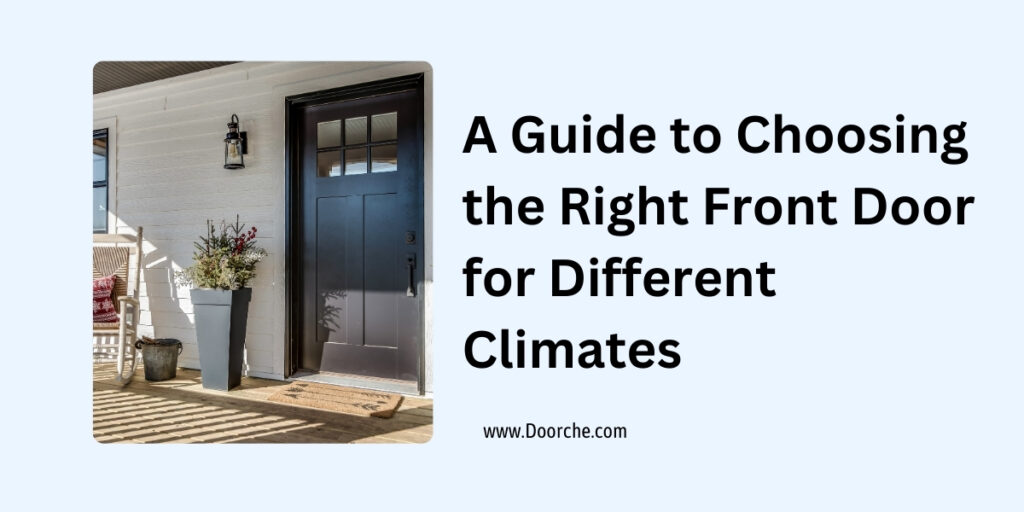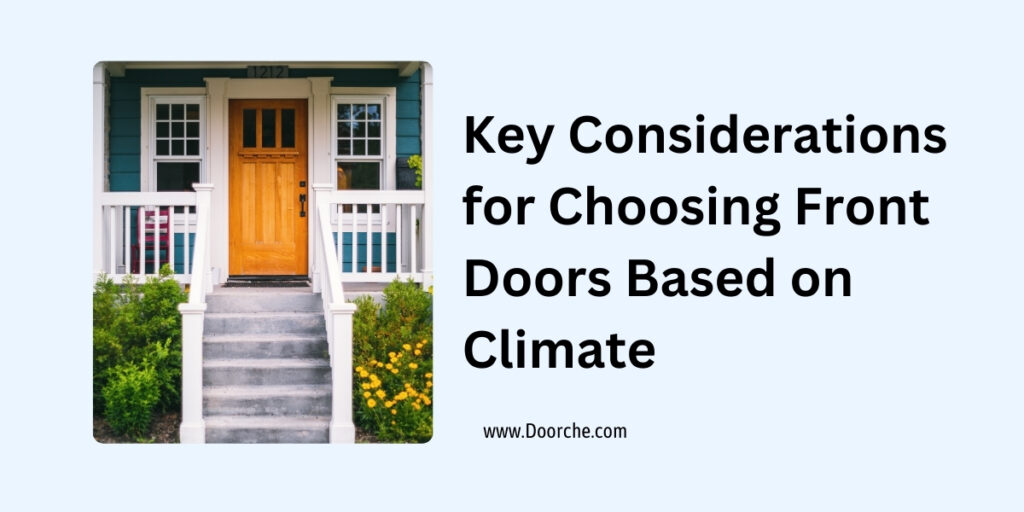Choosing a front door is a big decision. It’s the first thing guests see and is crucial to both the security and durability of your home. If you live in an area with unique weather conditions, selecting the right door becomes even more important. Your entry door should be able to withstand the elements while maintaining its functionality and look. This guide will help you pick the perfect front door based on the climate in your area.

Front Doors for Hot, Dry Climates
In hot and dry regions, doors need to be able to resist intense heat and prolonged sun exposure. Such conditions can warp materials, fade finishes, and compromise durability over time. For these climates, it’s best to choose a door made from materials like metal with rust-resistant coatings or composite doors with UV protection. Steel or aluminum doors with anti-corrosion finishes can withstand extreme temperatures and resist sun damage, making them great choices for hot areas.
If you prefer a wooden door in this climate, go for dense, hardwoods like oak or teak, and ensure it has a UV-protective coating. These finishes shield the wood from the sun and help prevent cracking, fading, or drying out due to the heat.
Front Doors for Humid and Coastal Climates
Humid and coastal climates present unique challenges for front doors. High humidity can cause materials to deteriorate quickly, leading to rust, warping, and swelling. For such environments, look for doors made of rust-proof materials like fiberglass, stainless steel, or treated aluminum. These materials are naturally resistant to water, keeping moisture from seeping in and damaging the door.
Wood doors can be problematic in humid areas because they absorb moisture, leading to warping and decay. However, if you’re set on a wood door, make sure it’s well-sealed with a waterproof finish. Also, opt for corrosion-resistant hardware to protect locks and handles from rust in high-humidity environments.
Front Doors for Cold and Snowy Regions
For areas with cold, snowy winters, insulation is key. A well-insulated front door keeps heat inside, lowering energy bills and keeping your home cozy. Doors with foam-filled cores, fiberglass, or steel with thermal insulation layers are ideal for colder climates. These doors not only prevent heat loss but also stand up well to the temperature fluctuations that can cause materials to expand and contract.
If you’re considering a wood door, make sure it’s made from durable hardwood and has insulation layers to help trap warmth and keep out the cold.
Front Doors for Windy and Storm-Prone Areas
If you live in an area prone to high winds or storms, your front door needs to be able to withstand these forces. Look for reinforced doors with strong frames and sturdy hinges. Fiberglass or steel doors with impact-resistant cores can hold up well under the pressure of strong winds and flying debris.
In high-wind regions, multi-point locks provide added security, making it harder for the wind to push the door open. Doors with reinforced panels are also a smart choice, as they offer extra protection against potential impact.

Key Considerations for Choosing Front Doors Based on Climate
- Check for IP Standards: Weather-resistant doors often come with IP65 or higher ratings, indicating resistance to dust and water. This rating is especially helpful in areas with high moisture or rain.
- Choose Rust-Resistant Hardware: Opt for locks, hinges, and handles that are made of corrosion-resistant materials. This is especially crucial in humid or coastal areas where rusting can be a major issue.
- Use Protective Coatings and Insulation: Choose doors with waterproof coatings, thermal insulation, and effective weather-stripping to keep out moisture and help regulate indoor temperatures.
Considering these factors will ensure you choose a door suited to your specific climate. With the right front door, you protect your home and enhance its energy efficiency and curb appeal.
